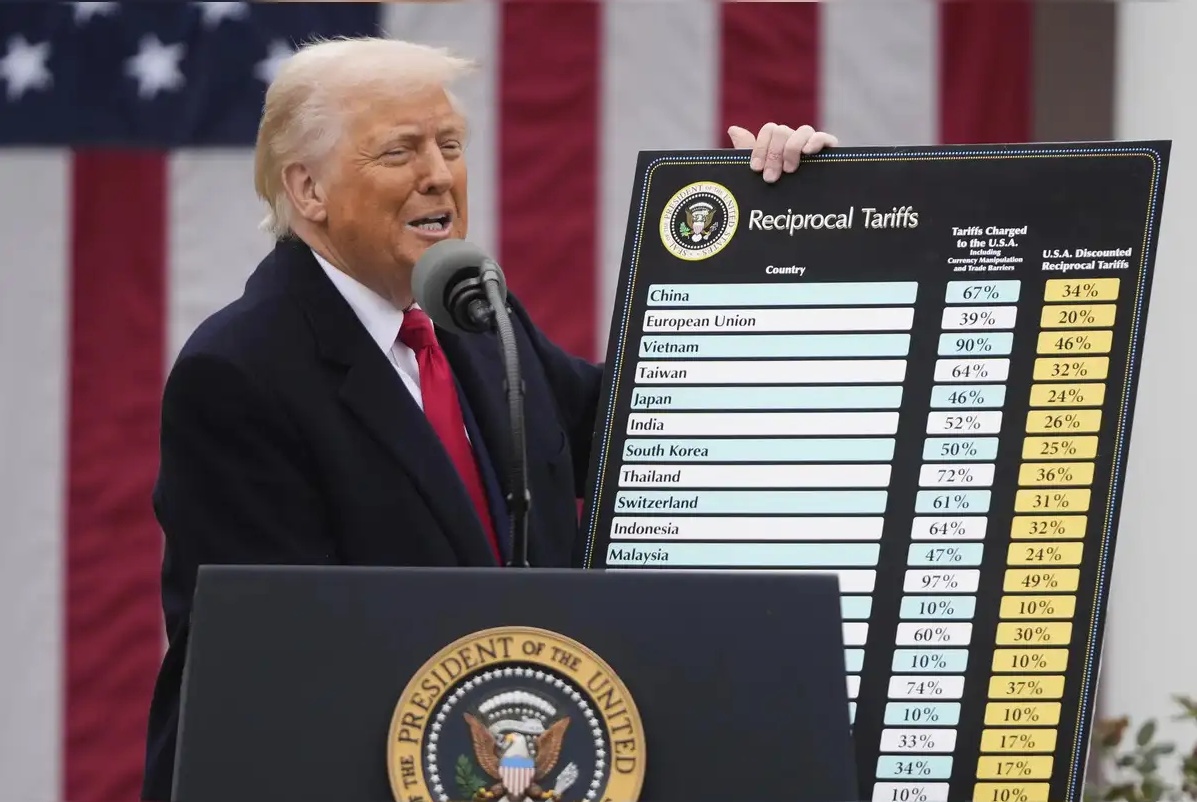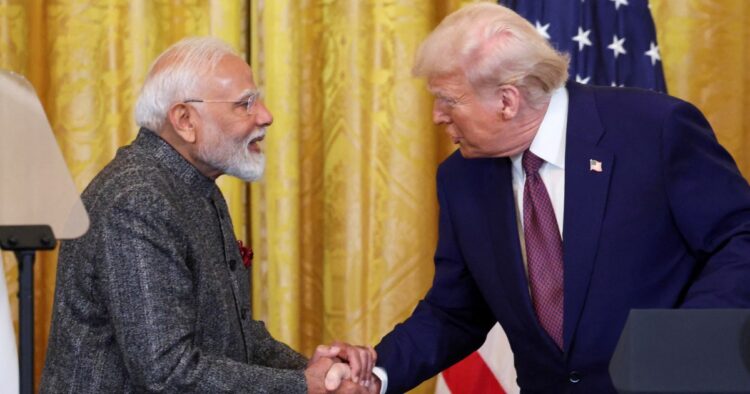- Trump enforces a 26% tariff on Indian imports, impacting key industries.
- India explores countermeasures and alternative trade strategies.
- Experts debate whether this move is a setback or a chance for economic growth.
US President Donald Trump has announced new trade tariffs on several countries, including India. Calling them “discounted reciprocal tariffs,” he said the US will charge India a 26% import duty. China faces a 34% tariff, while the European Union will have a 20% levy. The UK and Japan will also see higher tariffs, at 10% and 24%, respectively.

Why Did Trump Announce These Tariffs?
President Trump said that other countries have been unfair to the US by imposing high tariffs on American goods. He explained that India charges a 52% duty on US products, so the US will now charge India half of that amount. He also accused other nations of “looting and plundering” the US economy for years. He declared April 2 as “Liberation Day,” saying this move will help bring jobs and industries back to America.
How Will This Impact India?
India and the US have strong trade relations, with India exporting goods worth billions of dollars to America. This new tariff will increase the cost of Indian products in the US, making them less competitive. Sectors such as electronics, textiles, and gems & jewellery are expected to be hit the hardest.
Despite this, some experts believe India can handle the impact. A report by SBI Research states that the overall effect on India’s exports will be limited, with a reduction of around 3 to 3.5%. Many financial institutions like Goldman Sachs and Morgan Stanley also say India’s strong domestic market will help absorb the impact.
Which Indian Sectors Are Affected?
- Electronics: India exports $14 billion worth of electronic products to the US, which will now become more expensive for American buyers.
- Gems and Jewellery: The $9 billion worth of Indian jewellery exports will face a challenge due to higher tariffs.
- Automotive: While auto parts will not have the 26% tariff, they will still be taxed at 25%.
- Agriculture and Food: Indian food products like spices, rice, and seafood may see reduced demand in the US.
- Textiles and Apparel: The increased tariffs on China and Vietnam could actually benefit Indian textile exports, as US buyers may turn to India as an alternative supplier.
- IT and Software Services: Indian IT companies like TCS, Infosys, and Wipro will not be directly affected by tariffs, but stricter US visa policies could create problems.
- Pharmaceuticals: This sector is exempt from the new tariffs, which is good news for Indian companies like Sun Pharma and Dr. Reddy’s.
How Is India Responding?
India is expected to negotiate with the US to ease the impact of these tariffs. Before this announcement, India had already reduced import duties on several American products, such as bourbon whiskey and Harley-Davidson motorcycles, to maintain good trade relations. India has also agreed to buy more US oil and defense equipment to balance the trade deficit.
Experts say that these tariffs could push India to strengthen its trade ties with other countries and explore new markets. India has been working on alternative trade routes, including routes through the Middle East to Europe and the US, to reduce dependency on a single market.
The new tariffs will come into effect on April 9. Until then, Indian officials may try to find a solution through diplomacy. However, if the tariffs remain in place, Indian exporters will need to adjust their strategies to stay competitive in the US market.
While the US decision is a challenge, India’s growing economy, strong domestic market, and focus on trade diversification may help it overcome this hurdle. Experts believe that despite these setbacks, India will continue to grow as one of the world’s largest economies.
ALSO READ: “World Prepares For Trump’s Reciprocal Tariffs: How Will India Be Impacted?”

















Comments